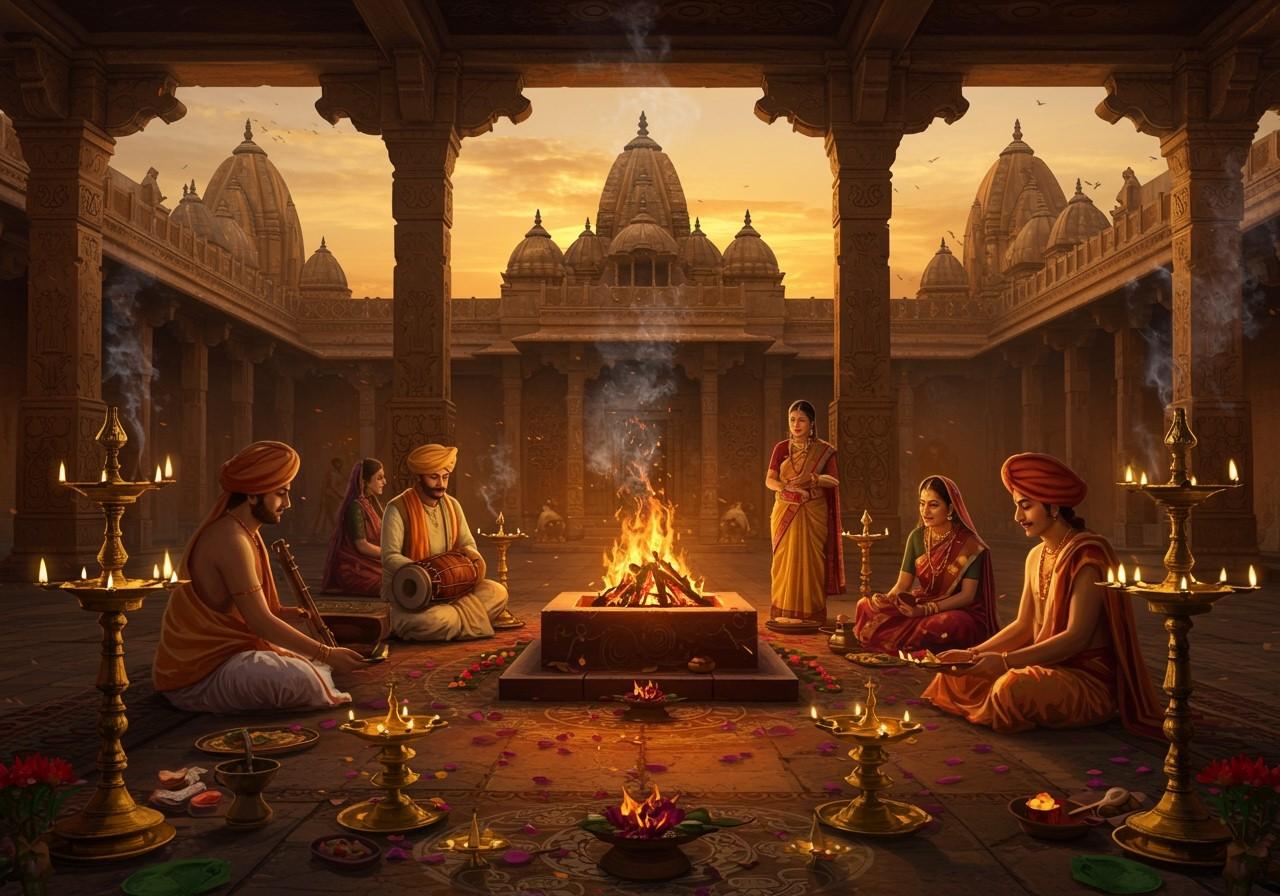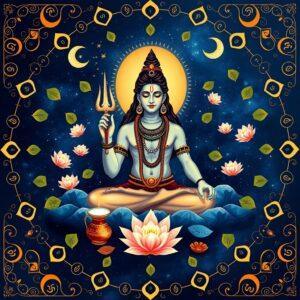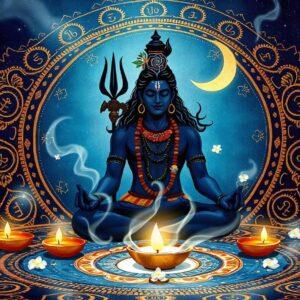
The Gupta Empire (circa 320-550 CE), known as India’s Golden Age, witnessed remarkable progress in various fields, including science, mathematics, art, literature, and governance. This era of flourishing arts, intellectual advancements, and religious tolerance greatly influenced neighboring regions. The empire’s rich traditions, festivals, and rituals offer a glimpse into the vibrant cultural landscape of the time. This article delves into the significant festivals and rituals prevalent during the Gupta period, providing valuable insights for those seeking to connect with India’s rich heritage.
Navratri Festivities During the Gupta Era
Navratri, a nine-night festival dedicated to the goddess Durga, held immense significance in Gupta society. It served as a powerful symbol of religious devotion and community unity.
- Nine Nights of Devotion and Dance: Each night of Navratri was dedicated to a different form of Durga, marked by prayers, devotional songs, and traditional dances. These varied practices reflected the diverse religious expression within the empire.
- Ritualistic Prayers and Offerings: Devotees performed specific rituals, offering flowers, sweets, and lamps to the goddess. These offerings symbolized devotion and sought blessings for prosperity and well-being.
- Influence of Gupta Literature: The rich literary tradition of the Gupta period significantly shaped the hymns and prayers recited during Navratri. Works by prominent poets and scholars contributed to the festival’s spiritual depth.
The Ashwamedha Yagna: A Royal Ritual
The Ashwamedha Yagna, a grand horse sacrifice, was a significant ritual performed by Gupta rulers to assert their sovereignty and power.
- Symbol of Imperial Power: The Ashwamedha Yagna was a powerful display of imperial authority and military strength. The successful completion of the ritual solidified the ruler’s position and influence.
- Elaborate Preparations and Rituals: The ritual involved meticulous preparations, including the consecration of a specially chosen horse and the participation of learned priests. The complex ceremonies spanned several days, reinforcing the ritual’s importance.
- Literary and Cultural Significance: The Ashwamedha Yagna finds mention in classical Gupta literature, including works by renowned playwright Kalidasa. The ritual’s depiction in literature highlights its cultural and historical significance.
The Role of Gupta Literature
The Gupta period was a golden age for Sanskrit literature, and this literary flourishing deeply influenced the empire’s festivals and rituals.
- Literary Giants and Their Works: Literary luminaries like Kalidasa and Aryabhata produced masterpieces that shaped cultural and religious practices. Their works explored themes of devotion, mythology, and philosophy, enriching the spiritual landscape of the time.
- Preservation of Ritualistic Knowledge: Gupta literature played a crucial role in preserving and transmitting knowledge of ritualistic practices. The detailed descriptions of rituals in literary texts ensured their continuity across generations.
- Integration of Arts into Celebrations: Poetry, drama, and music were integral parts of festivals and rituals during the Gupta era. The incorporation of these art forms enhanced the celebratory atmosphere and provided avenues for artistic expression.
Poojn.in: Your Partner in Celebrating Gupta Traditions
Poojn.in, India’s leading online store for cultural and religious goods, offers a wide range of products to help you observe these ancient traditions. We provide:
- Complete Puja Samagri Sets: Pre-assembled festival kits containing all the necessary items for various rituals and ceremonies, ensuring a convenient and authentic experience.
- Traditional Ritual Items: A selection of high-quality copper and brass vessels, authentic dhoop and agarbatti, and other essential items for your puja needs.
- Convenient Online Shopping: Enjoy a seamless shopping experience with detailed product descriptions, pan-India delivery, and secure packaging. Our customer service team is available to assist you in selecting the right products for your specific needs.
Conclusion
The festivals and rituals of the Gupta Empire offer a fascinating window into the rich cultural tapestry of ancient India. These traditions, preserved and enriched by the era’s literary achievements, fostered community bonds and religious expression. By learning about and appreciating these customs, we gain a deeper understanding of India’s heritage and the enduring legacy of the Gupta Golden Age. Explore the world of traditional puja items and bring the spirit of these ancient celebrations into your life with Poojn.in.


